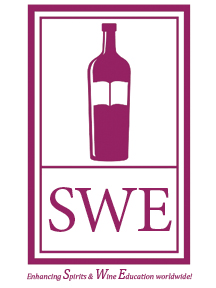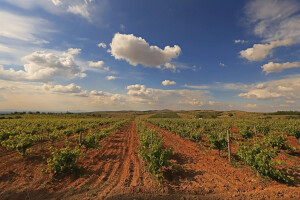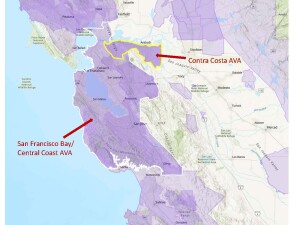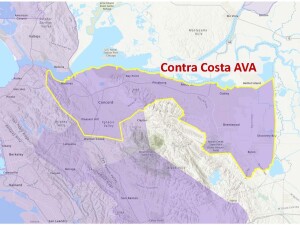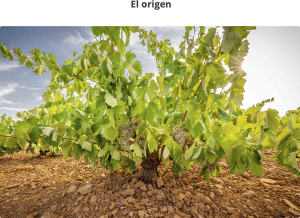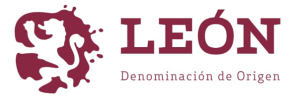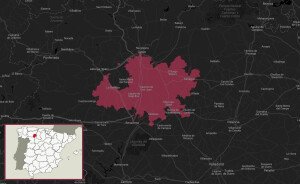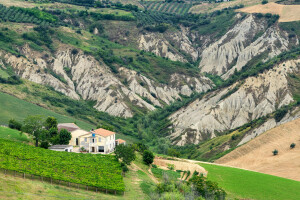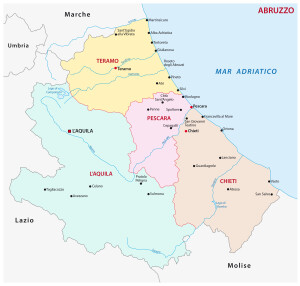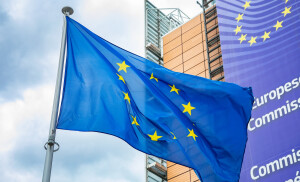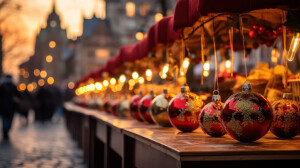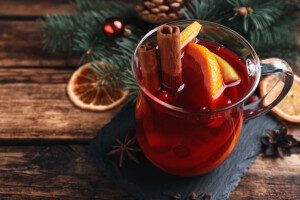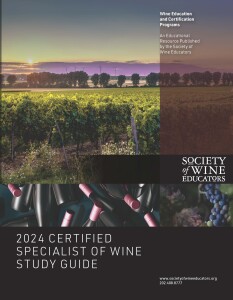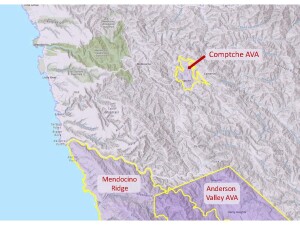
Base map via the TTB AVA Explorer (click to enlarge)
On April 8 (2024), the TTB (Alcohol and Tobacco Tax and Trade Bureau) of the United States announced the approval of the Comptche American Viticultural Area (AVA). The new AVA covers a small area within California’s Mendocino County.
The newly approved Comptche AVA is positioned within the boundaries of the existing North Coast AVA. However, it has been determined that the climate and soil of the area are distinctly different from those of the surrounding AVA. As such, the TTB has determined that the Comptche AVA is not to be considered a sub-appellation (or otherwise part of) the North Coast AVA. According to the TTB, this means that “vintners will not be able to use ‘‘North Coast’’ as an appellation of origin for wines made primarily from grapes grown anywhere in the Comptche AVA.”
According to the original petition, the distinguishing features of the Comptche Costa AVA include its topography, soils, and climate—as described below.
Topography: The Comptche AVA—located about 11 miles inland from the Pacific Coast—consists of a low-elevation valley surrounded by heavily forested lands and short, steep ridges. The elevation of the area within the appellation ranges from 187 to 400 feet asl, with all the commercial vineyards (at this time) planted at elevations ranging from 220 and 250 feet asl. This unique topography contributes to the area’s cool climate, as cool air sinks into the valley from the surrounding (higher) elevations at night.
Soils: There are two main soil types found in the Comptche AVA. The first—known as Bearwallow–Wolfey soil—is found on the rolling hillsides of the area as a type of well-drained, shallow, prone to erosion, and infertile soil resting atop fractured sandstone. The second—Perrygulch Loam—is found on the valley floor as a deep, rich, soil with a high clay content.
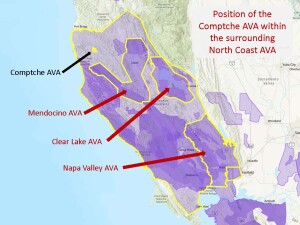
Base map via the TTB AVA Explorer (click to enlarge)
Climate: The Comptche AVA is a good deal cooler than the surrounding area and the other (previously established) AVAs in Mendocino County. According to the petition, the Comptche AVA is cool enough to be considered a “borderline” climate for the cultivation of wine grapes and only cold-hardy varieties will prove to be successful. As such, Pinot Noir is the only variety currently grown (for commercial purposes) in the area.
The Comptche AVA is further distinguished as it is one of the few areas in the coastal section of Mendocino County where non-timber related agricultural activity is permitted. The new AVA is surrounded by land designated as a Timberland Production Zone and zoned solely for the growing and harvesting of timber (for no less than ten years from the time it was so designated).
The Comptche AVA covers a total of 1,422 acres; of these, approximately 30 acres are planted with vineyards. There are currently three commercial vineyards in the area—all of which sell their grapes to local wines (as there are no wineries currently operating within the new AVA. When the Comptche AVA is brought into force—on May 8, 2024—the total number of AVAs in the United States will be 271; of these, 151 will be in California.
According to the good folks at Tripadvisor, the locals pronounce it with a silent t, as “comp-chee.” The name derives from the Pomo word Compatche, meaning in the valley among the hills.
Welcome to the world, Comptche AVA!
References/for more information:
Post authored by Jane A. Nickles…your blog administrator: jnickles@societyofwineeducators.org
